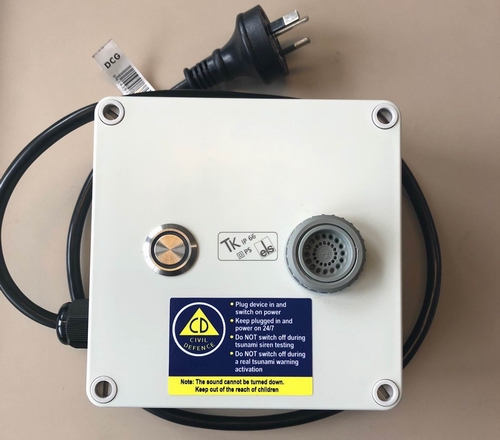Tsunami signs and alerting
Types of tsunami
There are three distinct types of tsunami (depending on how far away from New Zealand they are generated), with the warning times for each ranging from hours to minutes.
- Distant tsunami are likely to have more than three hours' warning time.
- Regional tsunami will be between one and three hours' travel time from New Zealand.
- Local tsunami are generated very close to New Zealand and may arrive with only a few minutes' warning – potentially ahead of any official warning.
Types of tsunami warnings
Warning messages and signals about a possible tsunami can come from several sources – natural, official or unofficial.
Natural warnings
For a local source tsunami which could arrive in minutes, there won't be time for an official warning, so you need to be able to recognise the natural warning signs and act quickly if required.
If you are near a shore and experience any of the following, take action. Do not wait for official warnings.
- Feel a strong earthquake that makes it hard to stand or a long earthquake that lasts more than a minute
- See a sudden rise or fall in sea level
- Hear loud or unusual noises from the sea
Move immediately to the nearest high ground or as far inland as you can out of tsunami evacuation zones. Even if you can't get out of your evacuation zone, go as far or as high as you can. Every metre makes a difference. If possible, walk, run or cycle to reduce the chances of getting stuck in traffic congestion. Be aware that there may be more than one wave, and it may not be safe for up to 24 hours. The waves that follow the first one may also be bigger.
Official warnings
Official warnings are only possible for distant and regional source tsunami. Official warnings are issued by the National Emergency Management Agency, and your local council or Civil Defence Emergency Management Group may also put out warnings through radio, tsunami sirens and other local procedures (e.g. emergency services vehicles with PA systems, or telephone trees).
Tsunami warnings are published on the National Emergency Management Agency's website. An Emergency Mobile Alert may also be issued if there is a threat of flooding of land areas.
Immediately follow the advice of any emergency warning. Do not wait for more messages before you act.
Tsunami sirens
Tsunami sirens are a strong signal to seek more information. When there is a tsunami warning the siren will sound intermittently followed by a voice warning message.
What do they sound like?
Listen to the Tsunami warning siren TEST message (MP3 923 KB)
Tsunami sirens don't necessarily mean you need to evacuate the area right away or even at all, unless the warning message specifically says to evacuate immediately. They do mean you need to find out what the level of threat is. You can do this by turning on the TV or radio or visiting one of the websites below if you hear a siren.
- Civil Defence Northland Facebook page
- National Emergency Management Agency website
- Whangārei District Council website
- Far North District Council website
- Kaipara District Council website
Unofficial or informal warnings
You may receive warnings from friends, other members of the public, international media and from the internet. Verify the warning only if you can do so quickly. If official warnings are available, trust their message over informal warnings.
For more information on what to do before, during and after a tsunami, check out the Community Response Plan for your area.
Indoor tsunami sirens
Indoor Tsunami sirens are available for purchase for those who live, work or play within Northland’s tsunami evacuation zones. They are designed to alert those within the building which it is installed. This is different from the outdoor tsunami sirens which are designed to broadcast over a wider area of the surrounding community.
The sirens are lightweight, for indoor use with a loud alerting noise. The units must be plugged in and switched on to a Northland power network provider (NorthPower or Top Energy).
The sirens will be activated automatically with the light flashing and the alerting sound simultaneously with the outdoor sirens during a real tsunami event affecting Northland and during bi-annual tsunami siren testing.
Units are available through the Northland Regional Council, Whangarei Office only currently, as a face-to-face introduction is required so the user understands the use and care of the unit. People can come to make enquiries or to purchase between 8.30am – 4pm Monday to Friday.
The units cost $155.25 gst inclusive and are sold at cost.
To find out if the building you live, work or play in, is located within a tsunami evacuation zone go to the Tsunami Evacuation Zones - online maps.
Listen to the sound of the indoor tsunami siren (M4A 53 KB)

